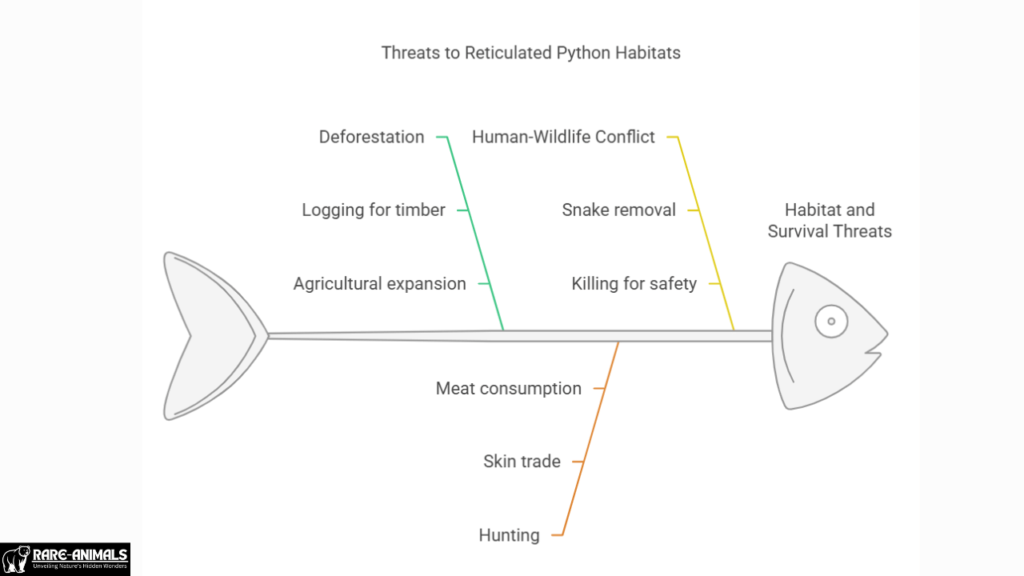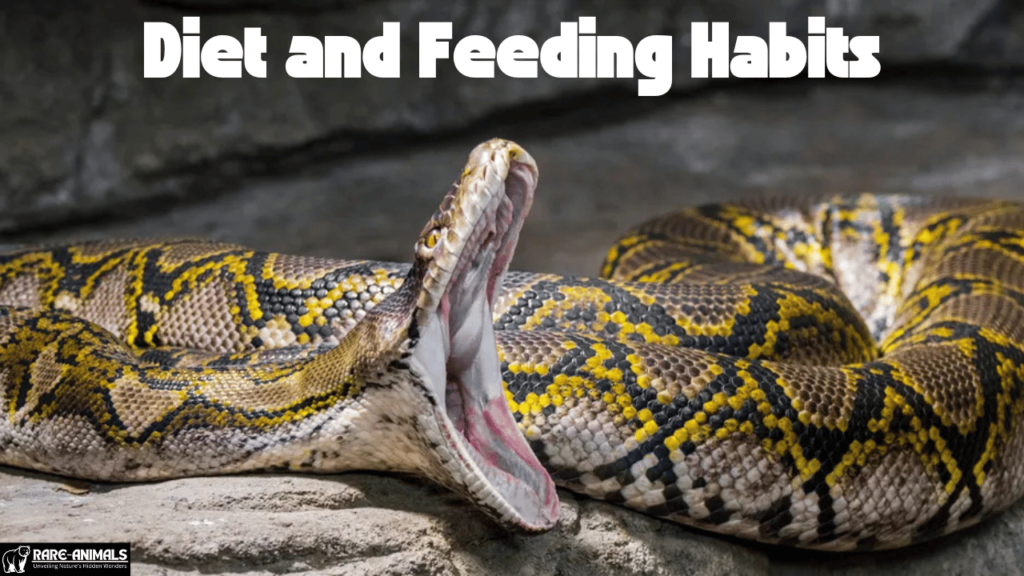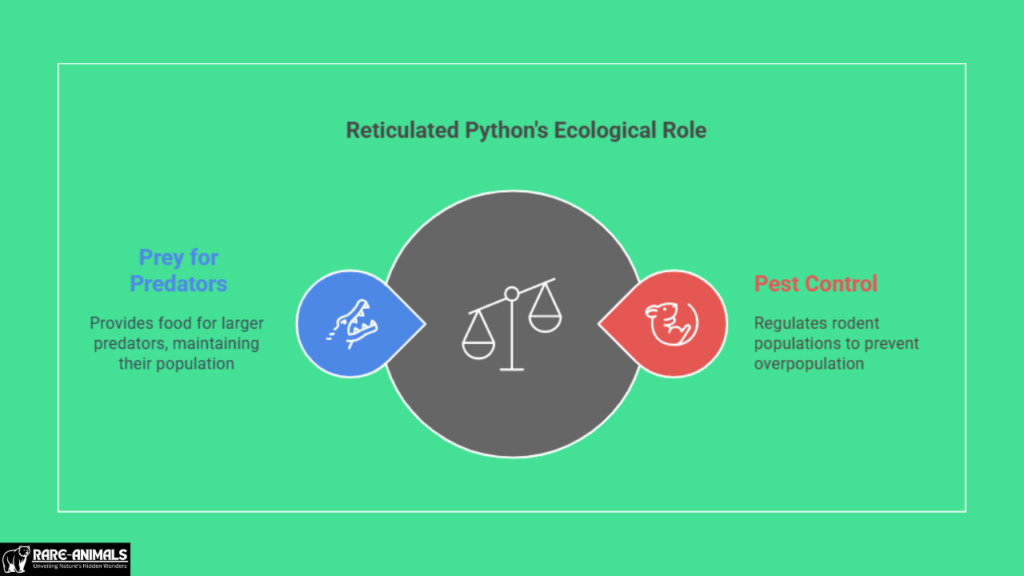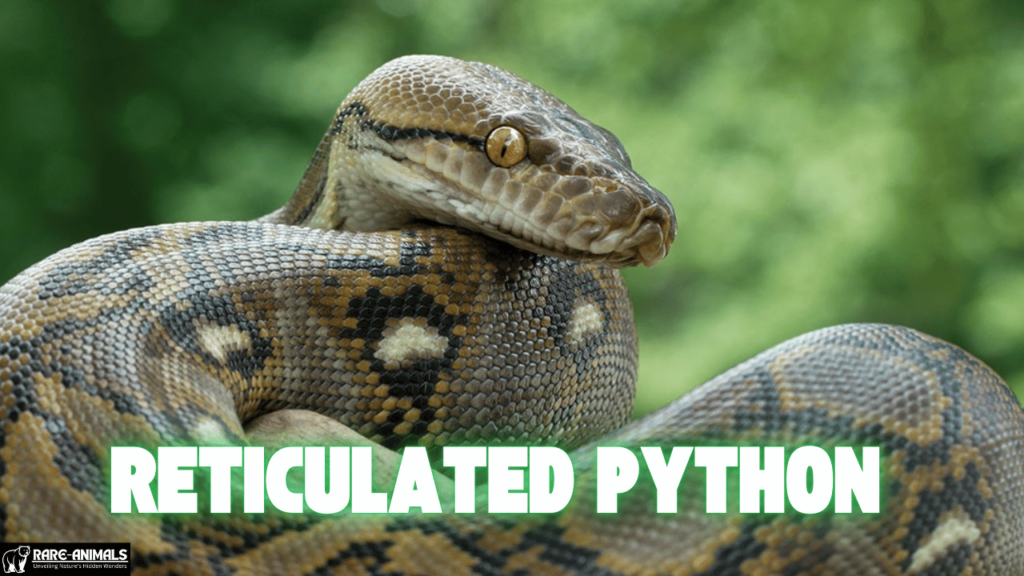The Reticulated Python (Python reticulatus) holds the title of the world’s longest snake, captivating wildlife enthusiasts, conservationists, and researchers alike.
Native to Southeast Asia, this giant serpent is known for its striking pattern, immense length, and impressive strength, making it a key predator in its ecosystem.
What is a Reticulated Python?
The Reticulated Python is a non-venomous constrictor snake that can grow to over 30 feet long, making it the longest snake species on the planet. Despite its formidable size, it plays an essential role in maintaining the ecological balance by controlling prey populations.
Key Characteristics
- Length: Averages between 10-20 feet, but can exceed 30 feet.
- Weight: Can weigh up to 350 pounds.
- Diet: Carnivorous, feeding on mammals, birds, and reptiles.
- Lifespan: Typically 15-25 years in captivity.
- Habitat: Prefers tropical rainforests, wetlands, and grasslands.
Habitat and Distribution
Reticulated Pythons are predominantly found in Southeast Asia, including countries such as Indonesia, the Philippines, Thailand, and Malaysia. They thrive in various environments, from dense jungles to urban outskirts.
Threats to Their Habitat
- Deforestation: Logging and agricultural expansion reduce their natural habitat.
- Hunting: Sought after for their skin and meat.
- Human-Wildlife Conflict: Encounters with humans can result in the snake’s removal or killing.

Behavior and Adaptations
Despite their intimidating size, Reticulated Pythons are shy creatures that rely on camouflage and stealth to avoid detection.
- Nocturnal Activity: Most active at night.
- Constricting Ability: Kill prey by coiling around it and applying immense pressure.
- Swimming Skills: Excellent swimmers, often found near water bodies.
Unique Behavioral Traits
- Ambush Predators: Lie in wait for unsuspecting prey.
- Rapid Growth: They grow quickly, especially in their early years.
- Solitary Nature: Prefer to live alone except during mating season.
Diet and Feeding Habits
Reticulated Pythons are opportunistic feeders and can consume a wide range of prey, such as:
- Mammals: Rodents, deer, and primates.
- Birds: Chickens and waterfowl.
- Reptiles: Other snakes and lizards.

Hunting Techniques
- Ambush Predation: Stay hidden and strike quickly.
- Powerful Jaws: Allow them to swallow prey much larger than their head.
Conservation Status
Although not currently listed as endangered, the Reticulated Python faces several threats that could impact their population.
Conservation Efforts
- Habitat Protection: Conservation areas and national parks help preserve their environment.
- Educational Programs: Raising awareness about their ecological importance.
- Anti-Poaching Measures: Addressing illegal hunting and trade.
How to Safely Encounter a Reticulated Python
Eco-tourists and wildlife enthusiasts should adhere to these guidelines:
- Maintain Distance: Avoid getting too close.
- Stay Calm: Do not provoke or attempt to handle them.
- Hire Guides: Explore their habitats with experienced professionals.
Importance in the Ecosystem
The Reticulated Python plays a crucial role in maintaining ecosystem balance by controlling the population of small to medium-sized mammals and birds.
Ecological Contributions
- Pest Control: Help regulate rodent populations.
- Prey for Larger Predators: Serve as food for crocodiles and large carnivores.

Conclusion
The Reticulated Python, the world’s longest snake, is a fascinating and vital part of its ecosystem. Despite its fearsome reputation, it contributes significantly to ecological balance. Conservation efforts are crucial to ensure their survival.
Want to learn more about these incredible reptiles? Consider visiting wildlife sanctuaries and supporting conservation programs.
FAQs
1. How big can a Reticulated Python grow?
They can reach lengths of over 30 feet, with some reports of individuals exceeding 32 feet.
2. Are Reticulated Pythons dangerous to humans?
While not venomous, they are powerful constrictors and should be treated with caution.
3. What do Reticulated Pythons eat in the wild?
They primarily consume mammals, birds, and reptiles, depending on availability.
Where can Reticulated Pythons be found?
They are native to Southeast Asia, thriving in rainforests, wetlands, and near water bodies.
How can we help in the conservation of Reticulated Pythons?
Support conservation efforts, avoid buying products made from python skin, and promote awareness about their ecological importance.

Alveena is an experienced content writer with a knack for crafting engaging and insightful pieces. She thrives on breaking down complex ideas and presenting them as clear, captivating content that resonates with readers.







